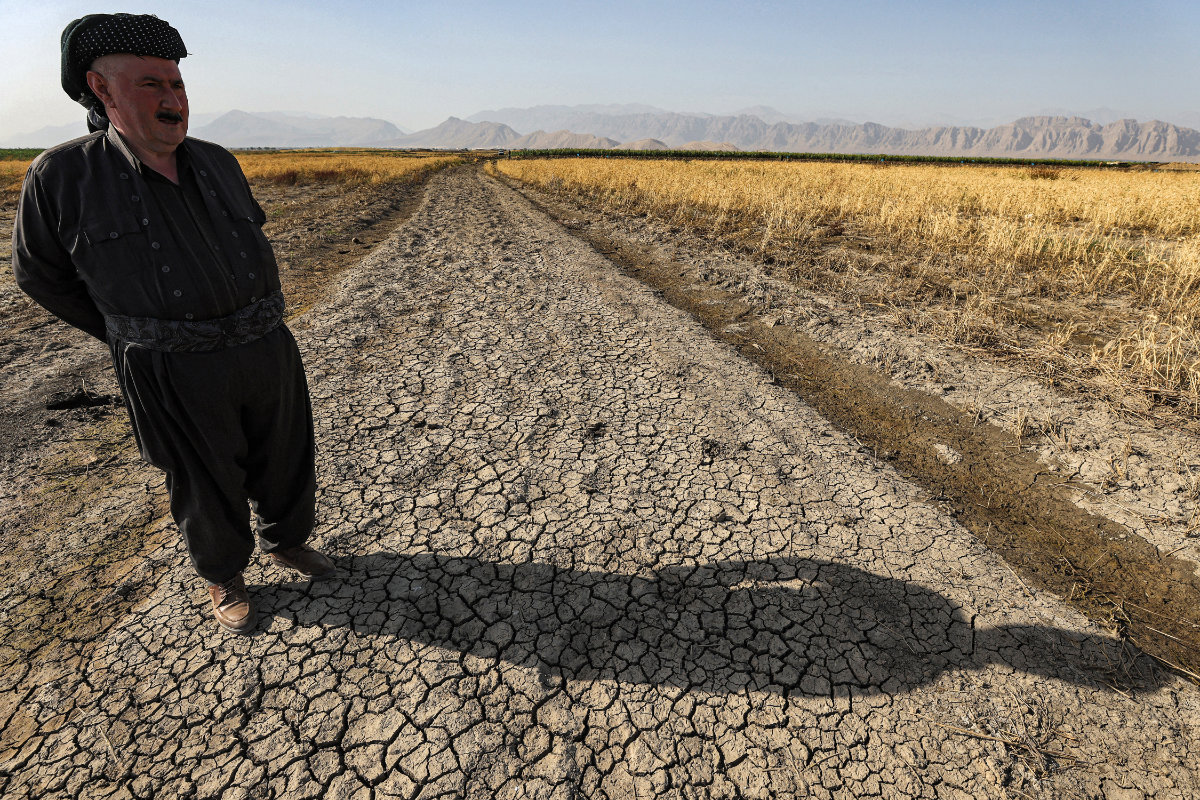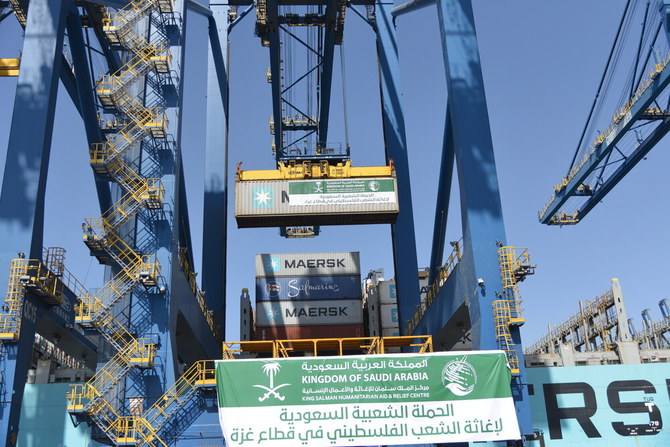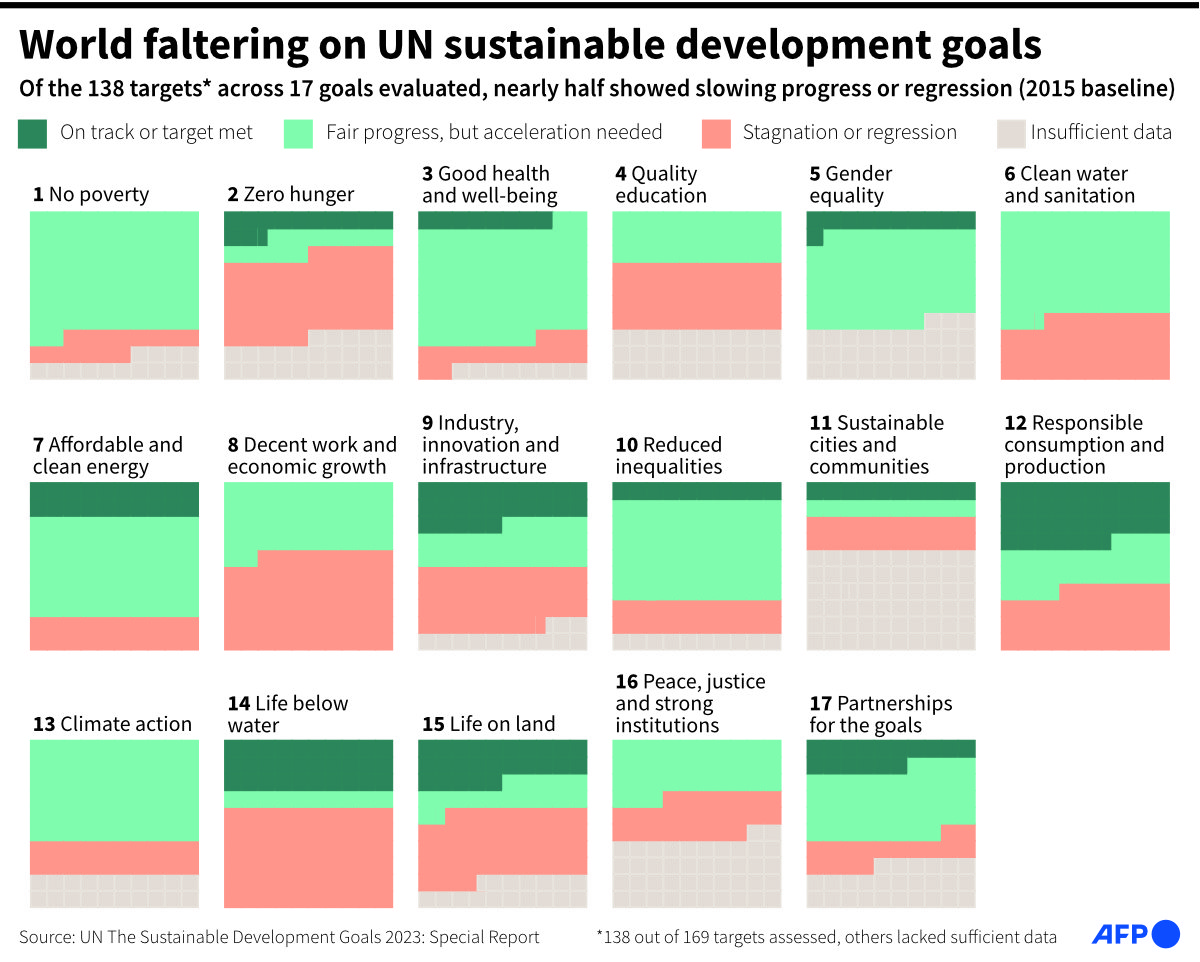LONDON: Last Wednesday evening, five Israeli soldiers were killed and seven others wounded in a “friendly fire” incident in northern Gaza.
The five paratroopers, aged between 20 and 22 and reported by The Times of Israel to have been part of an ultra-Orthodox company of paratroopers, died when an Israeli tank mistakenly fired on their position during confused fighting in Jabaliya.
They are not the first Israeli soldiers to have died at the hands of their comrades. According to the IDF, of the 279 personnel killed so far in Gaza since the start of ground operations on Oct. 27, 49 have died in similar incidents or accidents.
But after seven months of war, with Israeli troops fighting and dying over territory that had, ostensibly, already been cleared by the IDF earlier in the war, the stark futility of these latest deaths has struck a bitter chord in Israel.

A member of Israel’s security forces aims his rifle during an Israeli raid at the Nur Shams camp for Palestinian refugees near the occupied West Bank city of Tulkarm, on January 4, 2024. (AFP)
As Benjamin Netanyahu continues to evade making a deal with Hamas to bring home the remaining hostages — an ongoing national trauma emphasized by the recovery on Friday from Gaza of the remains of three of the victims of the Oct. 7 massacre at the Nova music festival — many fear the Israeli prime minister is pursuing a strategy of perpetual war solely in a bid to save his own political skin.
It has been no secret that over recent months Israel’s military has been pushing Netanyahu to develop a “day after” strategy. Last Wednesday, just hours before the deaths in Jabaliya, Israel’s defense minister broke rank to publicly criticize his prime minister.
In an extraordinary video address, Yoav Gallant, a former general, revealed that since October he had been consistently pressing Netanyahu in cabinet meetings to work toward a political solution in Gaza.
The end of the military campaign, he said, “must come together with political action. The ‘day after Hamas’ will only be achieved with Palestinian entities taking control of Gaza, accompanied by international actors, establishing a governing alternative to Hamas’ rule.
“Unfortunately,” he added, “this issue was not raised for debate. And worse, no alternative was brought up in its place.”

A protester speaks on a megaphone while holding up a sign depicting Israeli politicians during an anti-government demonstration in Tel Aviv on February 3, 2024. (AFP)
Gallant then embarked on an unprecedented public attack on Netanyahu that at times veered close to open revolt. “Indecision is, in essence, a decision,” he said.
“This leads to a dangerous course, which promotes the idea of Israeli military and civilian governance in Gaza. This is a negative and dangerous option for the State of Israel — strategically, militarily, and from a security standpoint.”
In short, he said: “I will not agree to the establishment of Israeli military rule in Gaza.”
Then he issued a direct challenge.
“I call on Prime Minister Benjamin Netanyahu to make a decision and declare that Israel will not establish civilian control over the Gaza Strip, that Israel will not establish military governance in the Gaza Strip, and that a governing alternative to Hamas in the Gaza Strip will be raised immediately.”
Netanyahu did not immediately respond to the attack in public. But right-wing national security minister Itamar Ben Givr — part of the shaky coalition government Netanyahu must hold together to cling on to power, and who has called repeatedly for the expulsion of Palestinians from Gaza and its resettlement by Jews — demanded Gallant be sacked.

Israel’s defense minister said that since October he had been consistently pressing Netanyahu in cabinet meetings to work toward a political solution in Gaza. (AFP)
Then, on Saturday, Benny Gantz, the other member of Netanyahu’s three-person war cabinet and his main political rival, announced that he would withdraw his centrist National Unity party from Israel’s emergency coalition on June 8 unless the prime minister agreed to a six-point “day after” plan for Gaza.
Gantz’s plan includes securing the return of hostages, ending Hamas’ rule, demilitarizing Gaza and establishing an international administration with “American, European, Arab and Palestinian elements” to manage its civilian affairs.
“Personal and political considerations have begun to penetrate the Holy of Holies of Israel’s national security,” Gantz said.
“A small minority has seized the bridge of the Israeli ship and is piloting it toward the rocky shoal,” and steps have to be taken urgently to avoid a “long and harsh existential war.”
Gantz also called on Israel to “advance normalization with Saudi Arabia as part of a comprehensive process to create an alliance with the free world and the West against Iran and its allies.”
Benny Gantz’s 6-point Gaza blueprint
- Bring the hostages home.
- Topple Hamas rule, demilitarize the Gaza Strip and gain Israeli security control.
- Alongside that Israeli security control, “create an international civilian governance mechanism for Gaza, including American, European, Arab and Palestinian elements — which will also serve as a basis for a future alternative that is not Hamas and is not (Palestinian Authority President) Abbas.
- Return residents of the north (evacuated due to Hezbollah attacks) to their homes by Sept. 1, and rehabilitate the western Negev (adjacent to Gaza, targeted by Hamas on Oct. 7).
- Advance normalization with Saudi Arabia as part of a comprehensive process to create an alliance with the free world and the West against Iran and its allies.
- Adopt a framework for (military/national) service under which all Israelis will serve the state and contribute to the national effort. Gantz, a former general, wants an end to exemption from military service for ultra-Orthodox Israelis.
Israel’s leadership is now so fragmented, and its population increasingly divided over Gaza and the wider issue of a Palestinian future, that there is even speculation that Netanyahu might be facing the unprecedented possibility of a military coup.
“As the war seems to have less of a point and less success, everything seems to be coming apart,” Shaiel Ben-Ephraim, analyst and host of the podcasts “Israel Explained” and “History of the Land of Israel,” told Arab News.
“Something has to give. The military is talking about a coup. I don’t think it is going to happen, but on Telegram and WhatsApp, military people who could do something are saying: ‘Someone should remove Netanyahu, someone should do something about Ben-Givr.’
“That’s very alarming. We’ve been hearing that from regular people on the left and the center for a long time. But now, even people in the Shabak (Israel’s internal security agency) are discussing the idea.”

An Israeli protester wearing a hat with a slogan against Israeli Prime Minister Benjamin Netanyahu looks on during an anti-government demonstration in Tel Aviv on April 27, 2024. (AFP)
Netanyahu, said Daniel Seidemann, an Israeli attorney specializing in Israeli-Palestinian relations and founder of NGO Terrestrial Jerusalem, “is leading us toward a never-ending insurgency.
“The entire military establishment opposes it,” Seidemann told Arab News. “The credible people in the government who are not racist and fanatics oppose it. But he’s adamant, and there are three reasons why.
“First, habitually Netanyahu is incapable of making a decision. He always procrastinates.
“Secondly, he doesn’t believe that peace exists. For him, life is eternal conflict, never decided, and the only goal is to be a bit stronger, a bit more sophisticated than your enemy and to contain them. But you’re not going to solve anything that way.”
But compounding these “predispositions” in the current situation in Gaza, he said, was Netanyahu’s overwhelming self-interest.
“An end of the war, a ceasefire, is the end of Netanyahu’s career and possibly jail for him, full stop,” he said. “That is why he has turned the hostages and their families into enemies of the state.”
There had, he said, been “an organized, sophisticated smear campaign against these people. It’s just remarkable. Why? Because you cannot prioritize returning the hostages and continue to fight in Gaza. It’s one or the other.
“Netanyahu knows that if the hostages are released, the price for that will be a ceasefire, and the ceasefire will be the end of him. So he is doing everything in his power to perpetuate this war. This is the way most people in Israel are talking today. His considerations are all personal.”
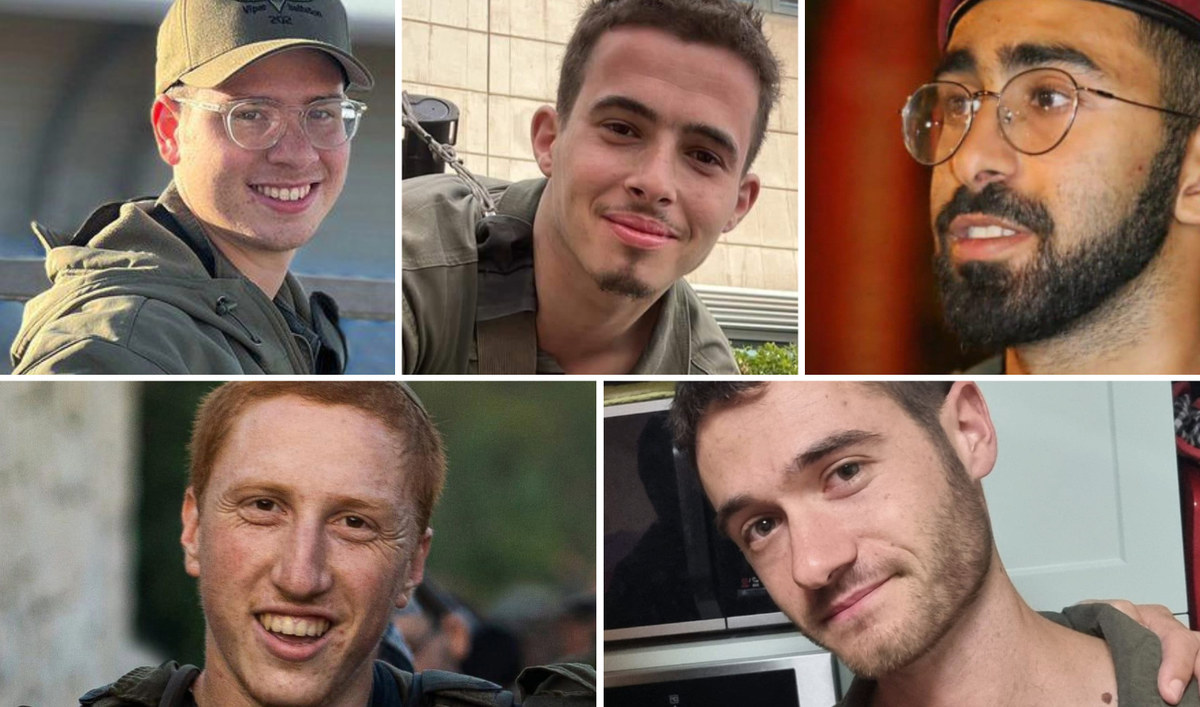
Soldiers killed in northern Gaza on May 15, 2024. Top row, left to right: Sgt. Ilan Cohen, Sgt. Daniel Chemu, Staff Sgt. Betzalel David Shashuah; bottom row, left to right: Staff Sgt. Gilad Arye Boim, Cpt. Roy Beit Yaakov. (Israel Defense Forces)
For Seth Frantzman, an adjunct fellow with the Washington-based Foundation for Defense of Democracies and senior Middle East correspondent and analyst at The Jerusalem Post, the lack of apparent direction over Gaza is rooted as much in systemic issues as in Netanyahu’s personality.
“I don’t think that they have invested the resources for long-term planning in terms of the strategy of what comes afterwards,” Frantzman told Arab News.
“That doesn’t mean that there aren’t voices that haven’t been calling for that — the Defense Ministry has been pushing for a day-after plan for many months.
“But Israel has spent 15 years or more ‘managing’ the conflict in Gaza with Hamas. Hamas became the devil that everyone is familiar with and therefore the idea of picking up some alternative kind of structure is a bit complicated — even though it’s obvious, after Oct. 7, that the murderous genocidal nature of Hamas means you just can’t live next to a group like that or continue to appease it.”
But Netanyahu’s “decisive indecision” is proving to be a gift for Hamas, Ben-Ephraim said.
“I think that at first Hamas was unpleasantly surprised by how Israel banded together and struck back so strongly, and the amount of support it got from the US.
“But because the Israeli strategy since has been so horrifically bad, they’re now very pleasantly surprised and indeed stunned to see Israel destroy its international standing, and its internal cohesion and solidarity, to no end besides Netanyahu’s surviving.”

Protesters lift national flags and portraits of Israelis held hostage by Hamas in Gaza since October 7, during a rally demanding their release outside Israeli Premier Benjamin Netanyahu’s private residence on January 27, 2024. (AFP)
Even before his boss Gallant spoke out, Herzi Halevi, the IDF chief of staff, was reported to have taken Netanyahu to task over his failure to develop a long-term strategy.
On May 12, Hebrew-language television station Channel 13 reported what it said was a verbatim account of a heated meeting between Halevi and the prime minister.
“We are now operating once again in Jabaliya,” Halevi, a paratrooper and former head of Israeli military intelligence, reportedly said.
“As long as there’s no diplomatic process to develop a governing body in the Strip that isn’t Hamas, we’ll have to launch campaigns again and again in other places to dismantle Hamas’ infrastructure.”
It would, he added, “be a Sisyphean task” — a reference to the ancient Greek myth about a king condemned by the gods to spend eternity repeatedly pushing a boulder up a hill, only for it to roll back down again every time.
A whiff of unprecedented dissent, if not outright revolt, is in the air.
“I don’t think you’re going to be seeing large-scale conscientious objection,” Seidemann said. “That’s not how it works here. But what you will see are tens of thousands of army reservists going home and leading the protests.”
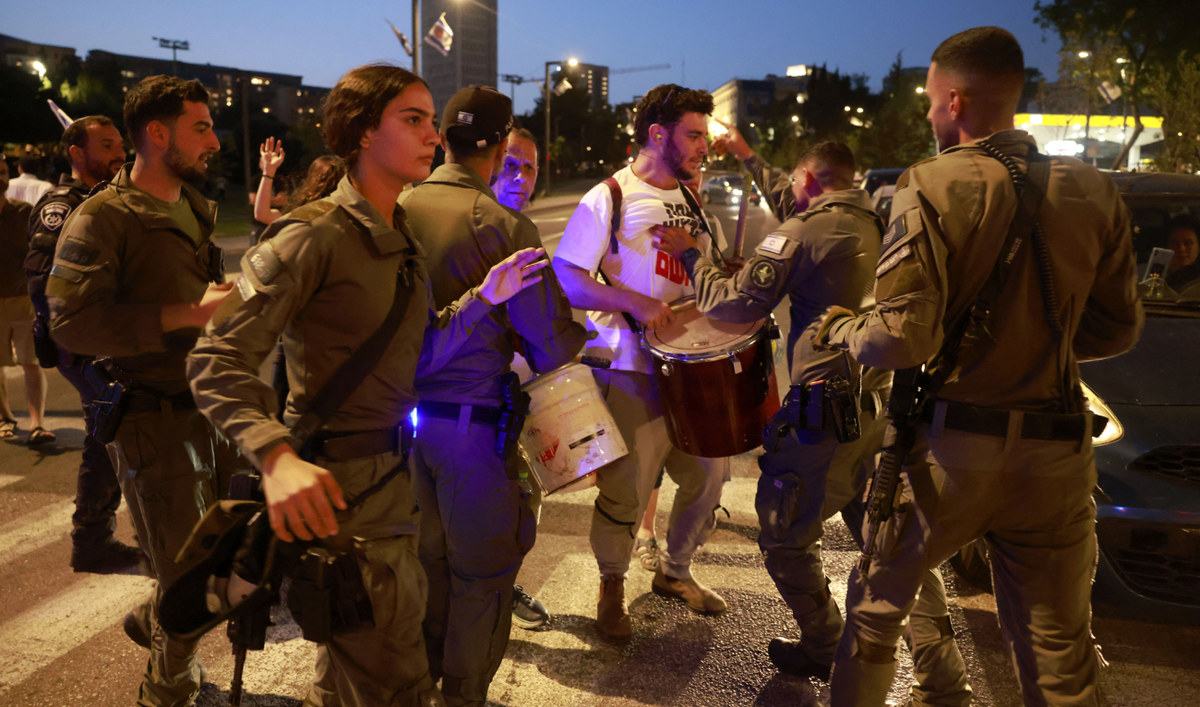
Israeli police disperse a protest against Prime Minister Benjamin Netanyahu’s government in Jerusalem, on May 20, 2024. (AFP)
Such protests have brought about political change in the past in Israel, most notably the toppling of Prime Minister Golda Meir in the wake of the 1973 Yom Kippur War, in the run-up to which she had repeatedly rebuffed peace overtures from Egyptian president Anwar Sadat.
“There are hundreds of thousands of people in the streets already,” Seidemann said. “And there have been two kinds of protests — for the release of the hostages and for elections for a new government.
“Initially the hostage families distanced themselves as a group. They wanted to appear to be apolitical. But that’s over. They’ve joined forces. There will be an event of some kind at some time over the next month or two, which will bring out millions of Israelis.”
It would, he believes, be impossible for Israel to reoccupy and resettle Gaza, as right-wingers in Netanyahu’s cabinet have demanded.
Quite apart from the uproar such a move would provoke among Israel’s staunchest allies in the West, Gaza “is going to be a lunar landscape,” he said. “Just to maintain some semblance of normality, Israel would have to harness so much of its resources, energies, money, just to be on this fool’s errand of running Gaza.”
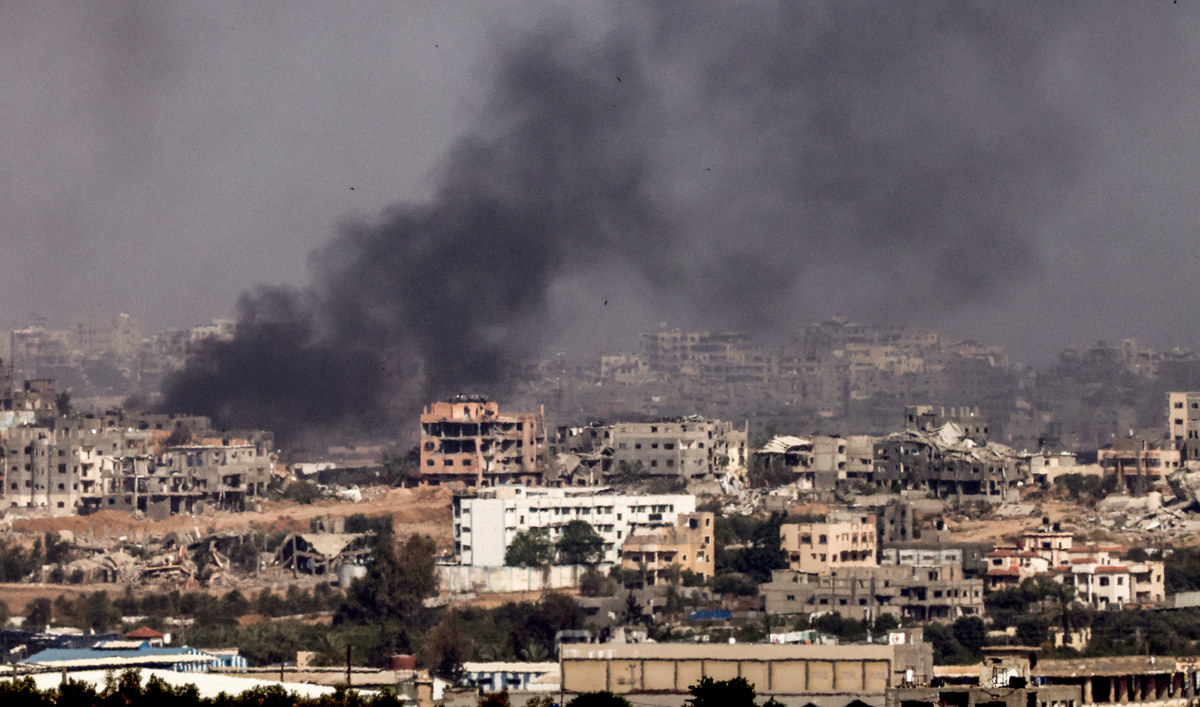
Smoke plumes from an explosion billow in the Gaza Strip, as seen from Israel’s southern border with the Palestinian territory, on May 21, 2024. (AFP)
In the meantime, millions are being traumatized, not only in Gaza, where the death and suffering are on such a shocking scale, but also — and crucially for Netanyahu’s future prospects — in Israel.
“The day after, both societies are going to be totally traumatized,” Seidemann said.
“A friend of mine sees the police records, and in Tel Aviv the police are receiving dozens of reports weekly of people who think they can hear digging under their apartment buildings.
“That’s the level of trauma that you’re dealing with and there’s a growing sense that this can’t go on.”
Whatever the eventual solution, and however the war in Gaza is finally brought to an end, one thing is certain, he believes.
“Nothing is possible with Netanyahu at the helm. The only thing that can be done until he’s gone is damage control.”
















